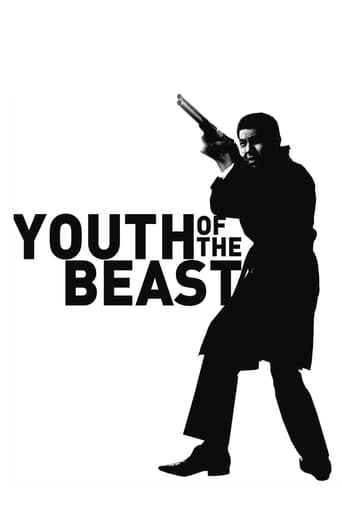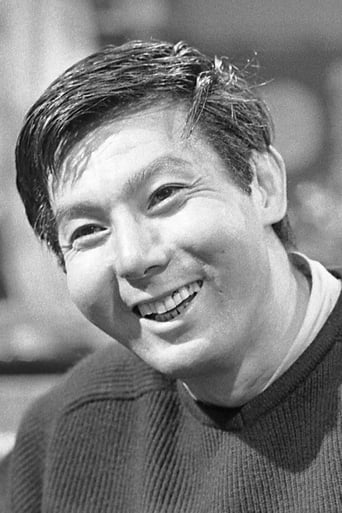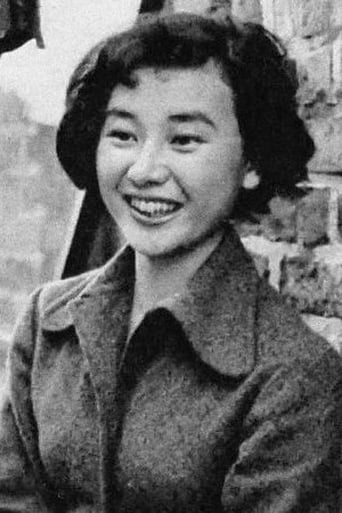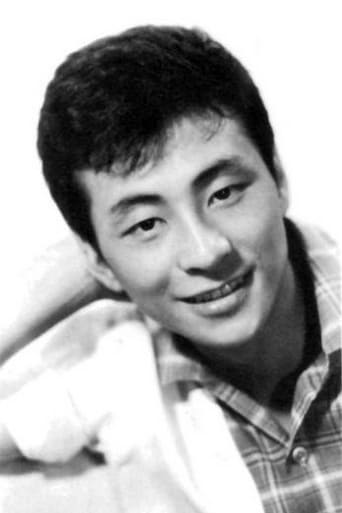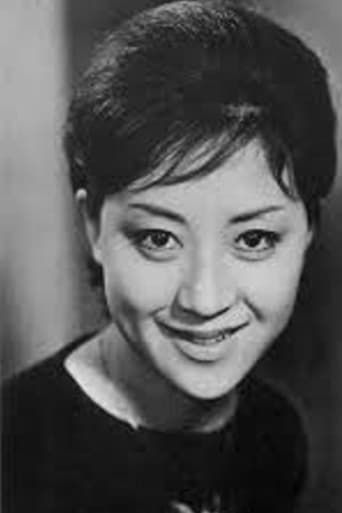Yashua Kimbrough (jimniexperience)
A double-suicide scandal is sweeping the streets involving a call-girl and a police detective ......... The mystery to unsolving the case is on (Film Noir segment)A mysterious man is the point of interest for two rivaling gangs: he beats up random gangsters, has a way with the ladies, and ransoms insurance companies for money .. He works for the Nomoto clan as a hired gun , and he works for the Takechi clan as a double-spy .. Secretly , he is the former partner of the murdered police detective before he was framed by the mob ,, and his infiltration into these crime groups are to find the people responsible for his partner's death . (pulp-fiction segment)
MartinHafer
"Youth of the Beast" begins with what appears to be a double suicide--a cop and his mistress. However, this will play an important part in the film later. In the meantime, the ultra-cool Japanese actor, Jo Shishido, plays Jo Mizuno--a guy who is super-tough and wants to join one of the yakuza gangs. Hwever, he obviously has something up his sleeve, as he soon joins the rival gang--and soon he begins pitting them against each other. In many ways, this plays like a non-comedic version of Kurasawa's 1961 classic "Yojimbo"--as a crafty guy manages to gain the trust of both gangs in order to bring them down. The big question is why? Why does J constantly risk his life and what does this have to do with the two dead folks at the film's beginning? Because there are rival gangs and lots of betrayals, the film can get a bit confusing--especially at the end when everyone seems to be shooting everyone! These scum naturally don't wear uniforms so sometimes I did have a bit of trouble keeping track of who is who. Still, it is a very good gangster film--one that has plenty of action and the usual Shishido level of coolness. Well crafted and exciting--plus learning who was behind everything--that was a pretty fifty twist!
e_tucker
I watched my first Suzuki film, Gate of Flesh, many months ago and was fascinated, almost against my will, by its vivid mixture of cheesiness and style. I wasn't sure what it was that so intrigued me until I saw Youth of the Beast and realized that I was watching the director that Tarantino, Miike, Chan-wook Park all would like to be. He is the real deal, sui generis, derivative of no-one, who single handedly broke out of the doldrums of Nikkatsu Studio's b-unit yakuza film grind of the late 50s early 60s to turn the genre into a bona fide art form.The story is Yojimbo like, enemy gangs played off against each other by Jô Shishido, alpha-male extraordinaire, a maverick thug, possibly concealing extra bullets in his pudgy cheeks, who shows up with no apparent history but some serious baggage. But the story doesn't matter, it just a frame on which Suzuki hangs his surreal, over the top sensibility, using slyly inventive camera work, splashes of brilliant color, and astonishing set design to create a dark parody of the genre that displays the jazzy hyper kinetic chaos of post war Tokyo. The honorable gangster of the 50s is dead, summarily shot in the head by Suzuki's fiendish wit, and only fools and sadists remain.The set pieces sustain a freshness even 44 years later, and illuminate what more recent (and derivative) genre directors might be trying to achieve. A sadomasochistic interlude plays out in an impromptu backyard dust storm painted in brilliant yellows. The invasion of a yakuza foot soldier's apartment yields a ceiling festooned with inexplicable face-bumping model airplanes. A one way mirror in the office of a yakuza nightclub examines the oblivious decadence of its patrons as violence plays out in the foreground. The rival gang is unaccountably headquartered in a movie theater, where the characters lay plots in the projection room as giant heads peer in and disembodied voices provide an eerie and distracting backdrop. Suzuki compels us to watch snippets of various Japanese and American noirs while we are watching his movie, how clever. A series of quick cuts hop around amongst a collection of candy colored telephones returning in full circle to settle in a slickly kitsch ultra stylish hostess club, where the camera, set in an invisible wall, follows the action by gliding effortlessly up and down a string of booths.It begins to be difficult to avoid the idea that Suzuki might just be poking fun at our voyeuristic lust for cinematic sex and violence. As the film progresses I keep getting an image of a puckish little fellow giggling gleefully from behind the camera - his humor is so infectious and so playful that I can't help laughing at myself right along with him. His mise en scène is all about disengaged observation, and when he isn't cramming his audience inside walls or behind glass partitions so we can a better view of a nice bit of torture, he makes us stand with the rest of the rubberneckers, at a safe distance, where we can enjoy the fun of a vicious street brawl without getting blood on our shoes. The camera pulls back whenever physically possible, not to demonstrate the wood block beauty of classic Japanese cinema, but to show us ourselves, sitting in the dark watching, or leaning in to discover just who is speaking from all the way across a room. He creates the same sense of distance for his characters, scattering them them liberally throughout the room, so that conversations occur with cuts that must leap the distance from one side to the other, while backs are often turned, and profiles more common than full face shots. Like us, they are permitted no empathy, no connection, all puppets in Suzuki's absurd universe.But we're still nowhere near the bottom of Suzuki's bottomless bag of tricks. His situational comedy is as broad as his camera is sly, taking care to subvert every code and convention of the genre along the way. There is a lot of fun to be had here as well, including a particularly amusing heist scene involving ineptly applied stocking disguises, smoke bombs and undignified scrambling, or Jo's decidedly un-stoic petulance regarding some Yakuza style finger whittling.As for pacing, there is no fat to be trimmed, and no fades, no dissolves and sparse transitional scenes. Suzuki's cuts are disconcertingly abrupt, he flings out plot points with utter contempt, often allowing mere seconds for us to absorb information. Quite challenging while trying to read subtitles, I made liberal use of the rewind button.A driving, jazzy score punctuates the film throughout that not only matches the amped up mobility of the visuals but the innovative jump cuts. The Criterion transfer is worth mentioning, it's a joy to behold. It rare to find such a crisp, brilliant restoration, and there aren't many b-level Japanese films from this era that look this good. Bonus material reveals Suzuki to be just what I'd expect, a sweet and unpretentious little old guy with a naughty gleam in his eyes. He's not very forthcoming about his film but seems very entertained by all the questions. Jô Shishido also has a brief interview where he ruefully discusses his cheek implants.
Ham_and_Egger
This is one of the Yakuza movies made during the height of Seijun Suzuki's run at Nikkatsu Studios. It's not as abstract as the later stuff but it's just as brilliant. It can't be stressed enough that though he made "entertainment films" he did it with a vengeance. I've seen four of his films so far, ranging from 1958 to 1967, and they're all strikingly original. From this period 'Tokyo Drifter' seems to get more press than 'Youth of the Beast' (both star Jo Shisido) but I'll take this one. The colors and the composition of the wide-screen images draw you in, while the violence and the narrative jags keep you guessing. Highly recommended both for both its artistry and its energy, if you like gangster movies here's one for you.The plot revolves around Jo, a tough ex-con with a mysterious past who shows up and deftly goes to work for rival Yakuza bosses. He immediately pits them against each other and starts raking in as much money as he can. However, it soon becomes clear that he has ulterior motives involving a string of call-girls operated by one of the bosses. Literally no one is safe when he starts clawing his way toward the center of the web.
